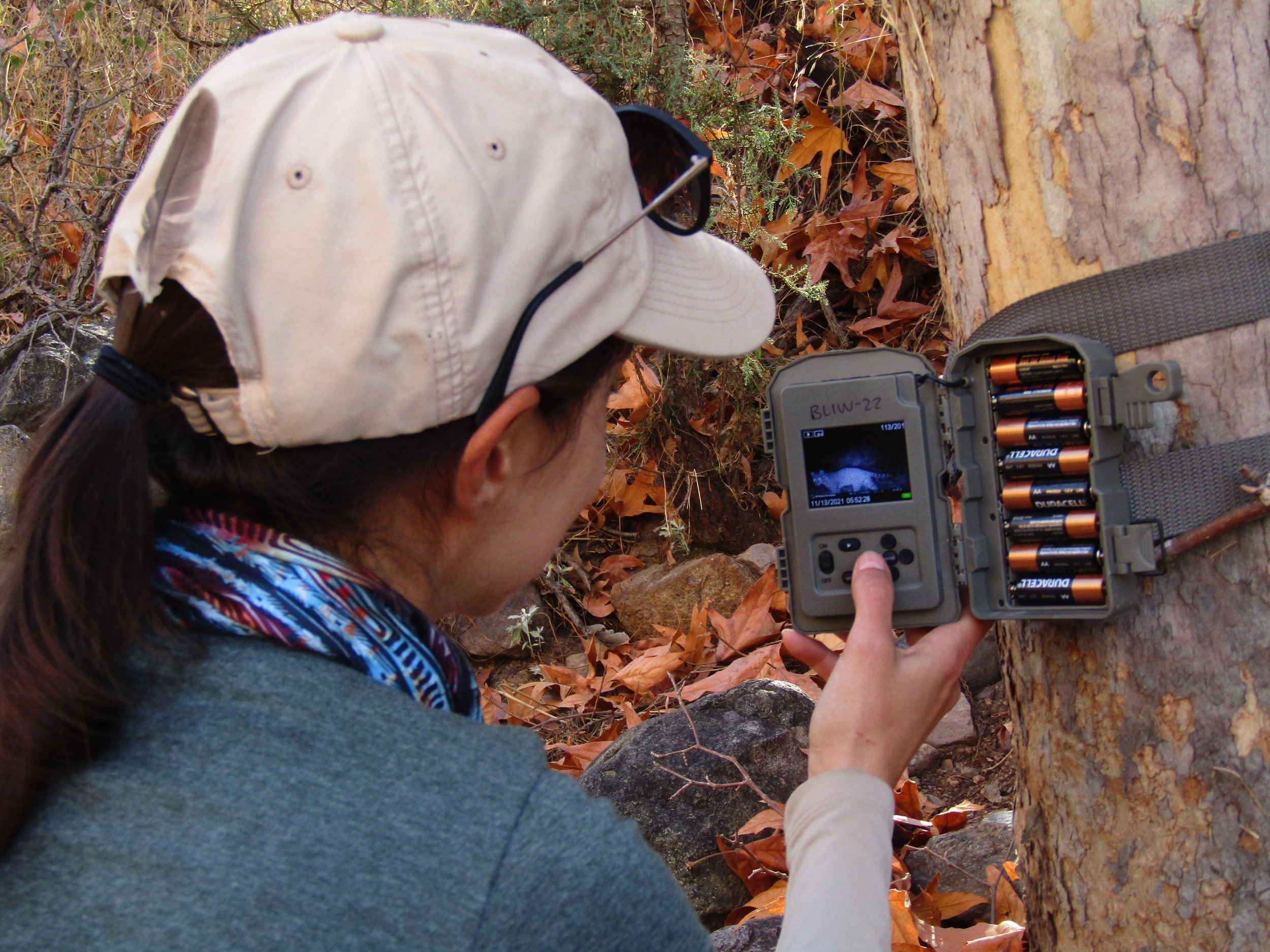A Glimmer of Hope in the Sonoran Desert
Mirna checks a camera trap during a recent field visit.
My backpack falls heavy to the ground as I sit down on a rock to rest my feet. It's the last camera trap we check after a long day of hiking and installing more of these cameras. My colleague, Cecilia, reviews the photos these devices have captured over the past few months, and her exclamation startles me. “Good news!” she shouts joyfully.
In the photo, an ocelot (Leopardus pardalis) walks across the sand of a dry creek in the northern canyons of the Sierra Azul mountain range in northern Sonora, Mexico. Any sighting of this creature in this region is important to document. Not only is this species uniquely beautiful with its striking spotted coat—we were also seeing it in the very northernmost reaches of its habitat range!
The ocelot is a medium-sized spotted cat whose home expands continents - from South America’s southernmost area in Argentina, up to the U.S.-Mexico border region, where its northernmost breeding population was recently documented. This feline has been deemed an endangered species by Mexico’s Ministry of Environment and Natural Resources (SEMARNAT). Currently, there are not many/very few studies of this species in this region. This means that decision-making for its appropriate regional management is extremely difficult.
Most of Mexico’s land is privately owned, and in northern Sonora one of the main economic activities is cattle ranching. Poor ranching practices are undoubtedly one of the main causes of erosion, habitat fragmentation and loss of predators (like ocelots) within this landscape. However, the good news is that there are landowners who look beyond economic gain and are interested in conserving the resources and biodiversity of their own lands. In the case of Rancho Oro Negro, this interest comes not from government subsidies or collaborations with civil society organizations, but from a genuine concern for protecting Mexico’s natural heritage for future generations.
A camera trap image of an ocelot.
The ocelot is an elusive species that prefers to stray from areas of heavy grazing, infrastructure and human activity. Cecilia’s reaction to the photo was that of surprise and excitement because we understand that this species’ presence, here in Sonora, is an indication that the area is well-conserved.
In a fragmented world undergoing dramatic climate change, these areas of conserved habitat are critical to maintaining regional habitat connectivity and allowing species to move across the landscape. Conservation initiatives stemming from a community effort, coupled with adequate land management by decision-makers, is clearly reflected in the presence of this ocelot in the region – a glimmer of hope in the Sonoran desert.



